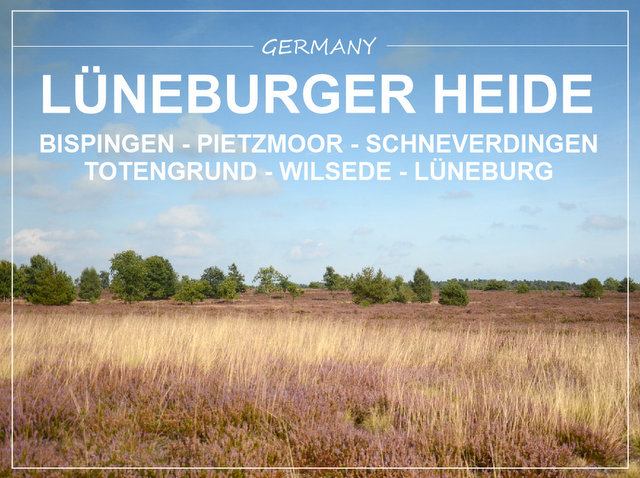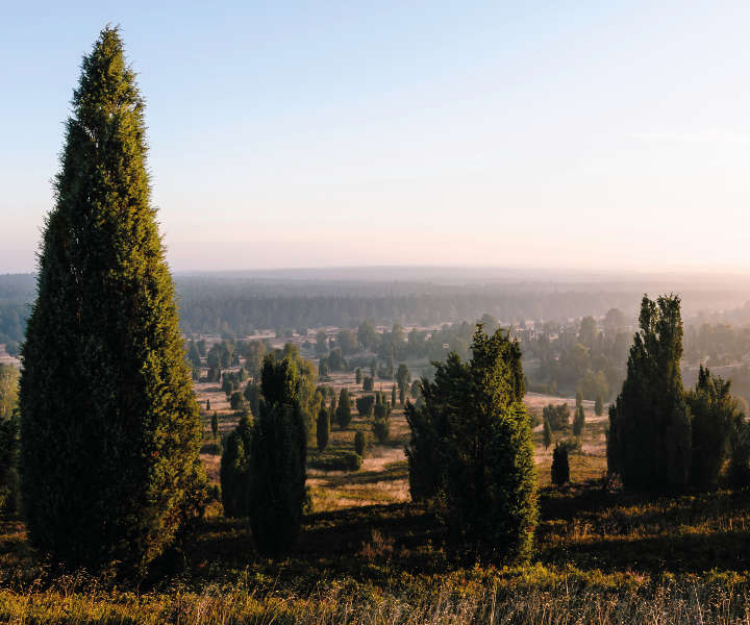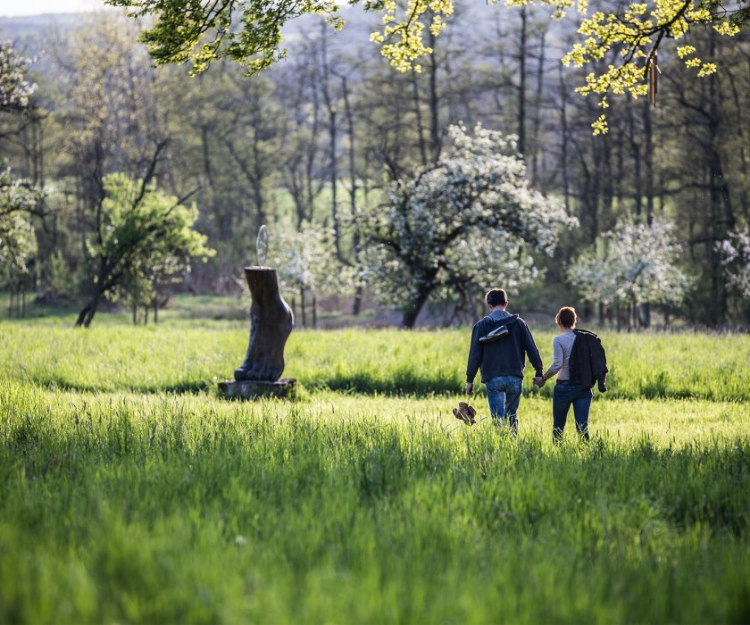
Lüneburg Heath (Lüneburger Heide) is located in the state of Lower Saxony (Niedersachsen) in northern Germany. It lies between the cities of Hamburg, Hanover, and Bremen, with its main area centered around the town of Lüneburg. The heath stretches over a large region, characterized by its unique heathland landscape, forests, and small villages. It is a popular destination for nature enthusiasts, offering various outdoor activities such as hiking, cycling, and horseback riding.

Lüneburg Heath (Lüneburger Heide) has a long natural history, with its formation dating back to the last Ice Age, around 10,000 years ago. The heath landscape as it is known today, characterized by vast stretches of heathland, emerged due to human activity in the Middle Ages. During this period, extensive deforestation and grazing by livestock prevented the growth of trees, allowing heathland vegetation to dominate. Therefore, while the region itself is ancient, its transformation into a heathland landscape took shape around the medieval period, approximately between the 9th and 14th centuries.

Lüneburg Heath (Lüneburger Heide) is a natural landscape that evolved over thousands of years due to geological and ecological processes, not something invented by a single person. Its formation can be attributed to natural processes such as glaciation during the Ice Age and subsequent human activities like deforestation and grazing that shaped its current heathland ecosystem. Therefore, it was not "invented" by any individual but rather developed over millennia through natural and human influences.

Lüneburg Heath (Lüneburger Heide) is named after the town of Lüneburg, which is located within the heath's vicinity. The town of Lüneburg has historically been an important settlement in the region, and its name became associated with the surrounding heathland due to its geographical prominence. The word "Heide" in German translates to heath in English, referring to the characteristic heathland vegetation that dominates the landscape in this area. Therefore, the name Lüneburger Heide simply denotes the heathland region around the town of Lüneburg.




Lüneburg Heath (Lüneburger Heide) is highly regarded among hiking enthusiasts for several reasons:
1. **Scenic Diversity**: The heath offers a diverse landscape with rolling hills, expansive heathland, forests, and picturesque small villages, providing a variety of terrain to explore.
2. **Trails and Routes**: There are numerous well-marked hiking trails and routes that cater to different levels of difficulty and preferences, from leisurely strolls to more challenging hikes. These trails often lead through peaceful forests, open heathland, and past charming heathland villages.
3. **Nature and Wildlife**: Hikers can enjoy the natural beauty of the heath, including its unique flora and fauna. The heath is home to heather (which blooms in late summer), juniper bushes, and various bird species, offering opportunities for birdwatching and nature observation.
4. **Cultural and Historical Sites**: Along the trails, hikers can discover cultural and historical landmarks such as old mills, ancient burial mounds (Hünengräber), and traditional half-timbered houses in villages like Wilsede.
5. **Accessibility**: Lüneburg Heath is easily accessible from nearby cities like Hamburg, Hanover, and Bremen, making it a convenient destination for day trips or longer hiking vacations.
Lüneburg Heath provides a serene and varied landscape that appeals to hiking lovers seeking both natural beauty and cultural exploration.







Lüneburg Heath (Lüneburger Heide) indeed offers great hiking opportunities throughout the year, each season providing its own unique experiences:
1. **Spring**: In spring, the heathland comes alive with vibrant colors as wildflowers bloom, including the famous purple heather that carpets the landscape in late summer. The weather is usually mild, making it a pleasant time for longer hikes.
2. **Summer**: Summer brings warmer temperatures, perfect for exploring the heath and its surrounding forests. The longer daylight hours allow for extended hiking trips, and the heather blooms from late July to August, creating a stunning purple landscape.
3. **Autumn**: Autumn transforms the heathland with golden hues as the foliage changes colors. The cooler weather is ideal for hiking, and the trails are often less crowded compared to the peak summer months.
4. **Winter**: While winters in Lüneburg Heath can be cold, they offer a quieter and more peaceful atmosphere for hiking. The bare trees and frost-covered landscapes can be quite picturesque, and there are often fewer tourists, allowing for a more intimate experience with nature.
Overall, the accessibility and beauty of Lüneburg Heath make it a wonderful destination for hiking enthusiasts year-round, with each season offering its own charms and opportunities for exploration.